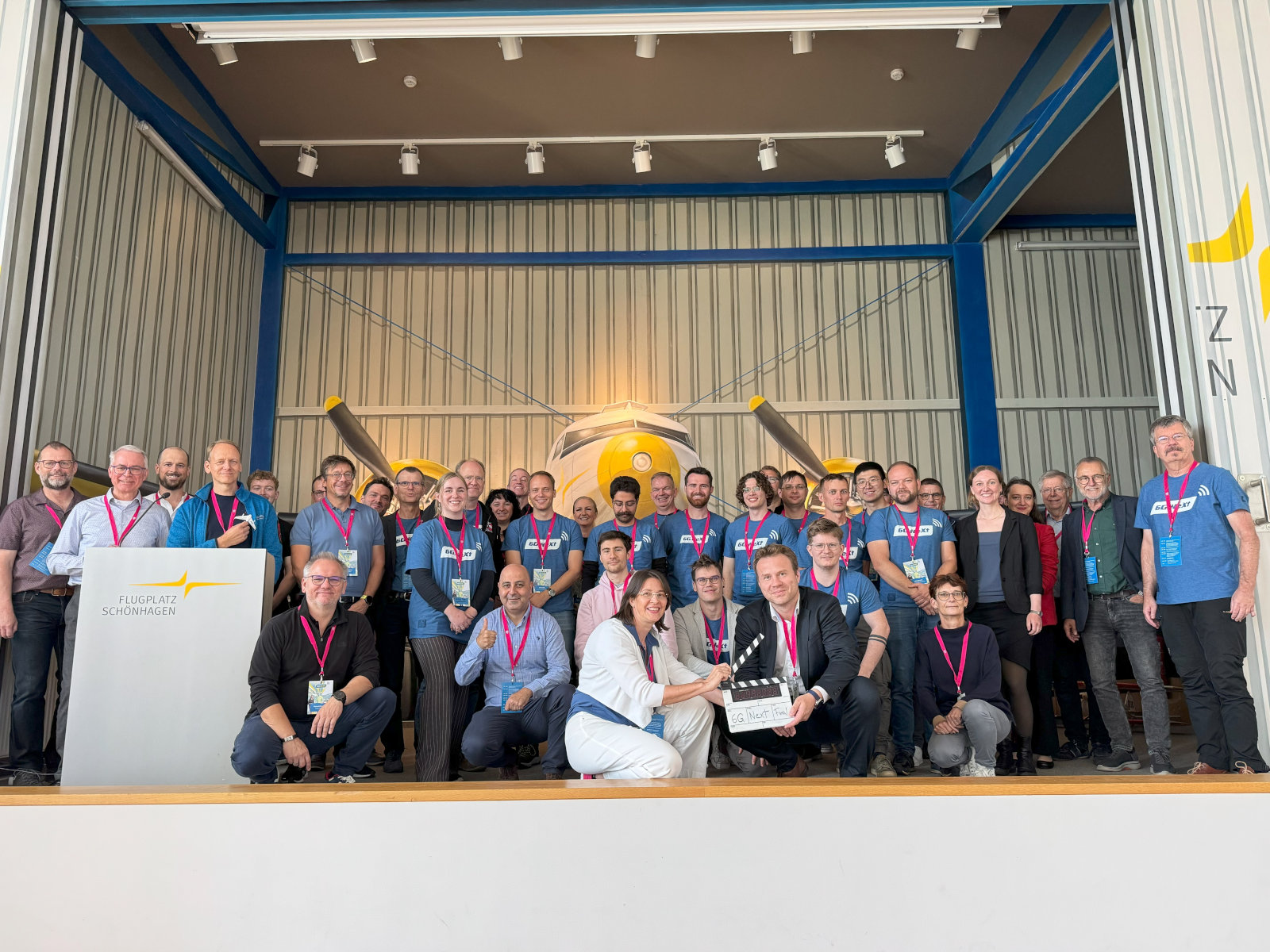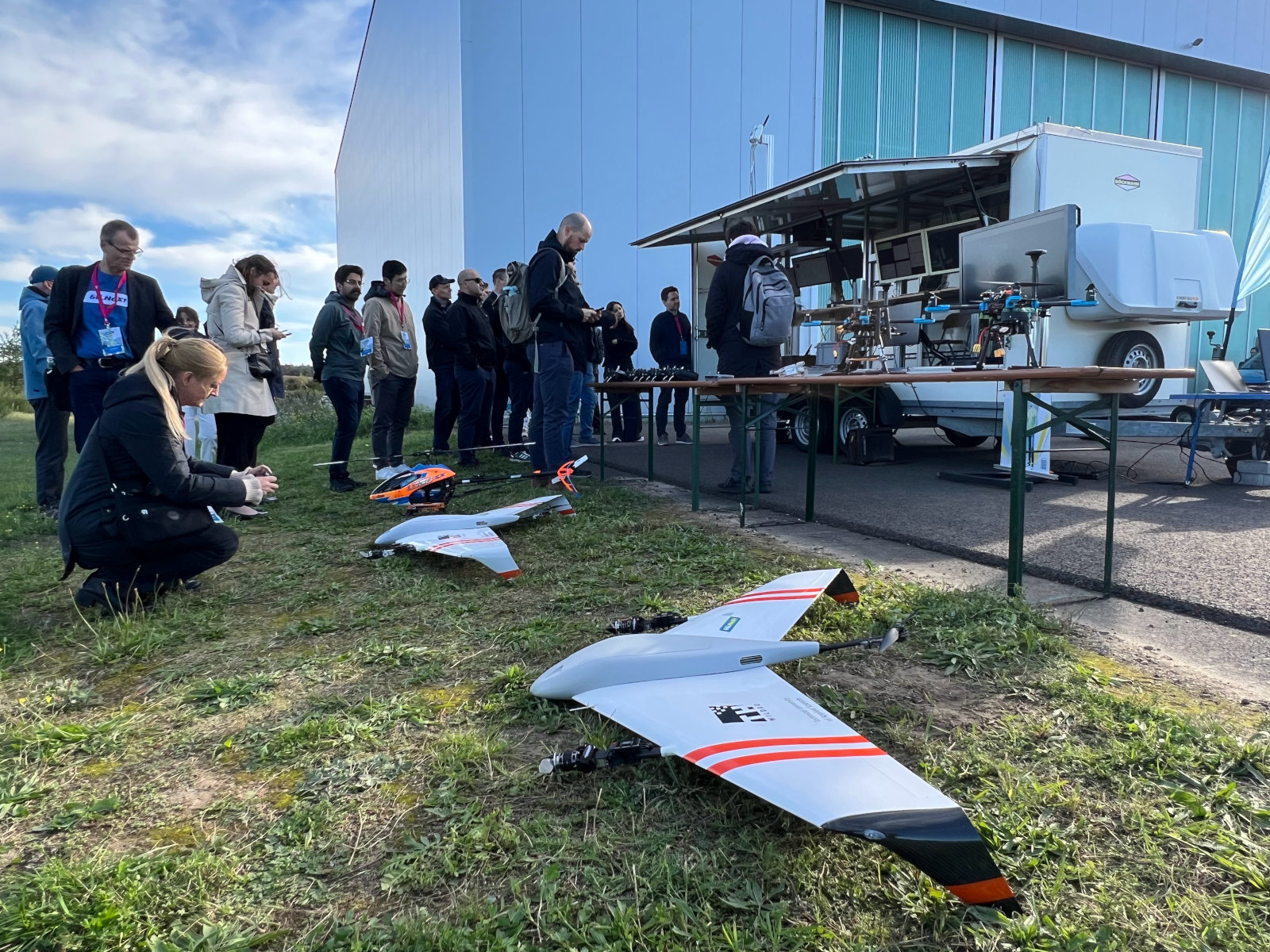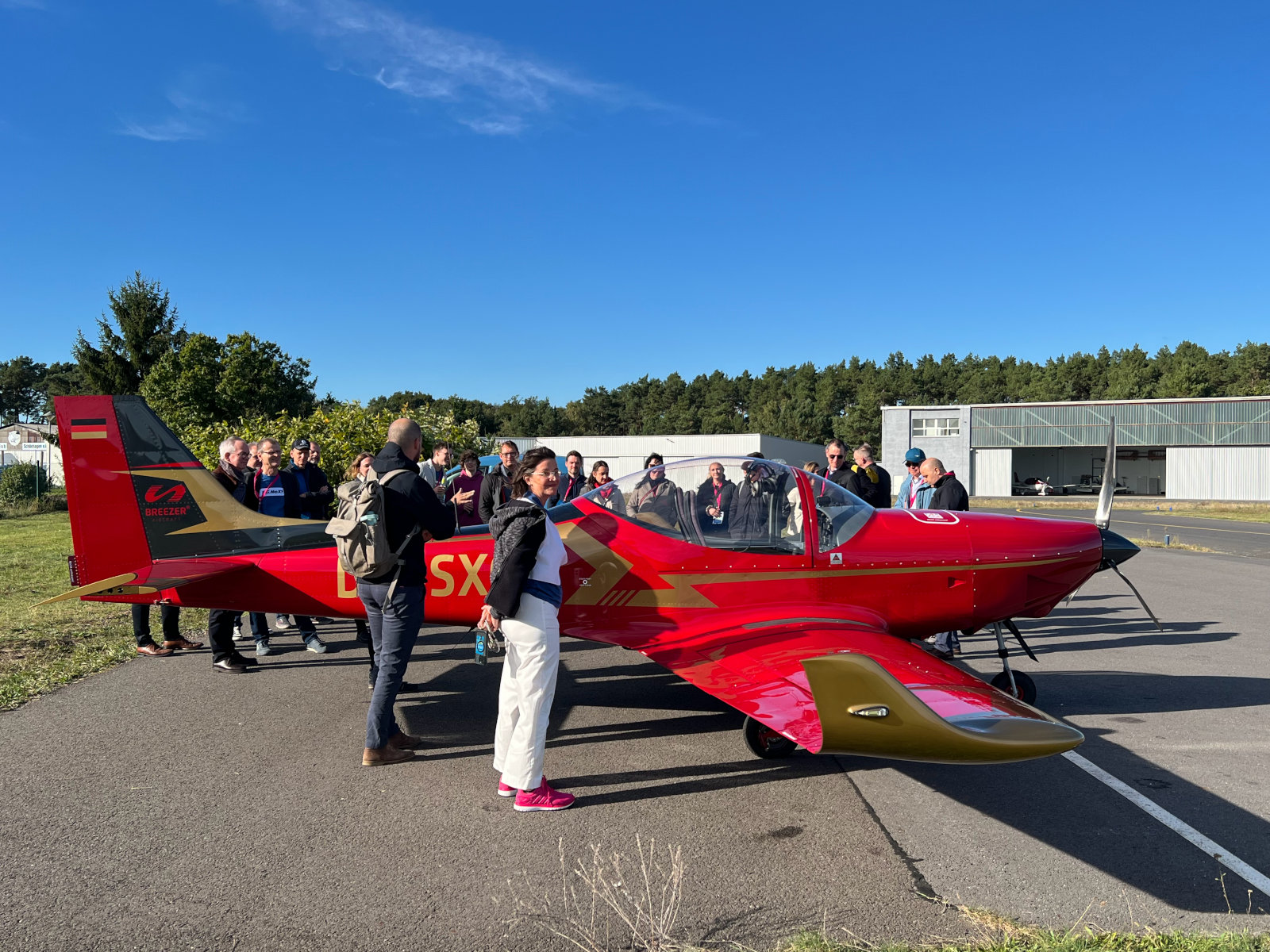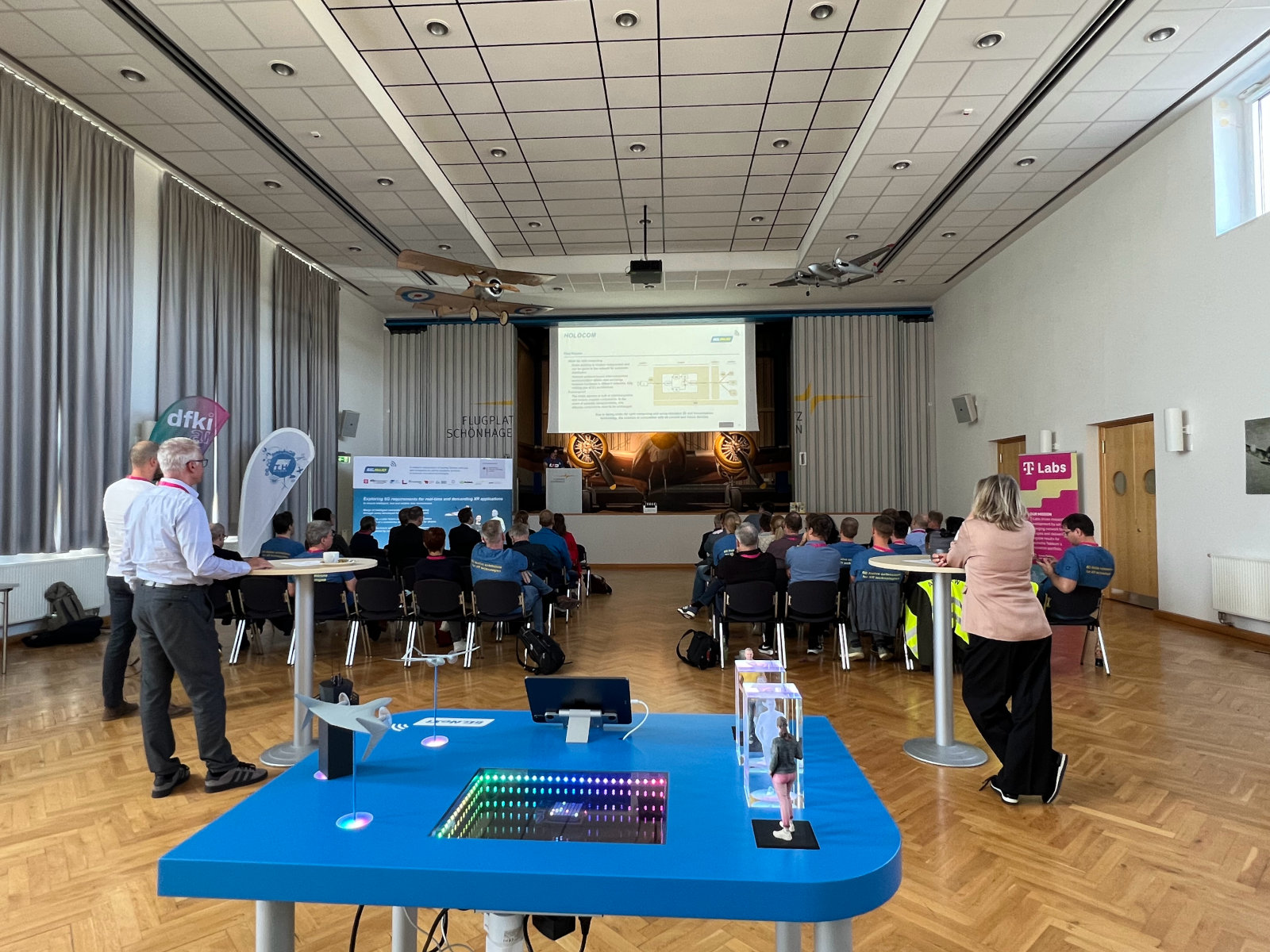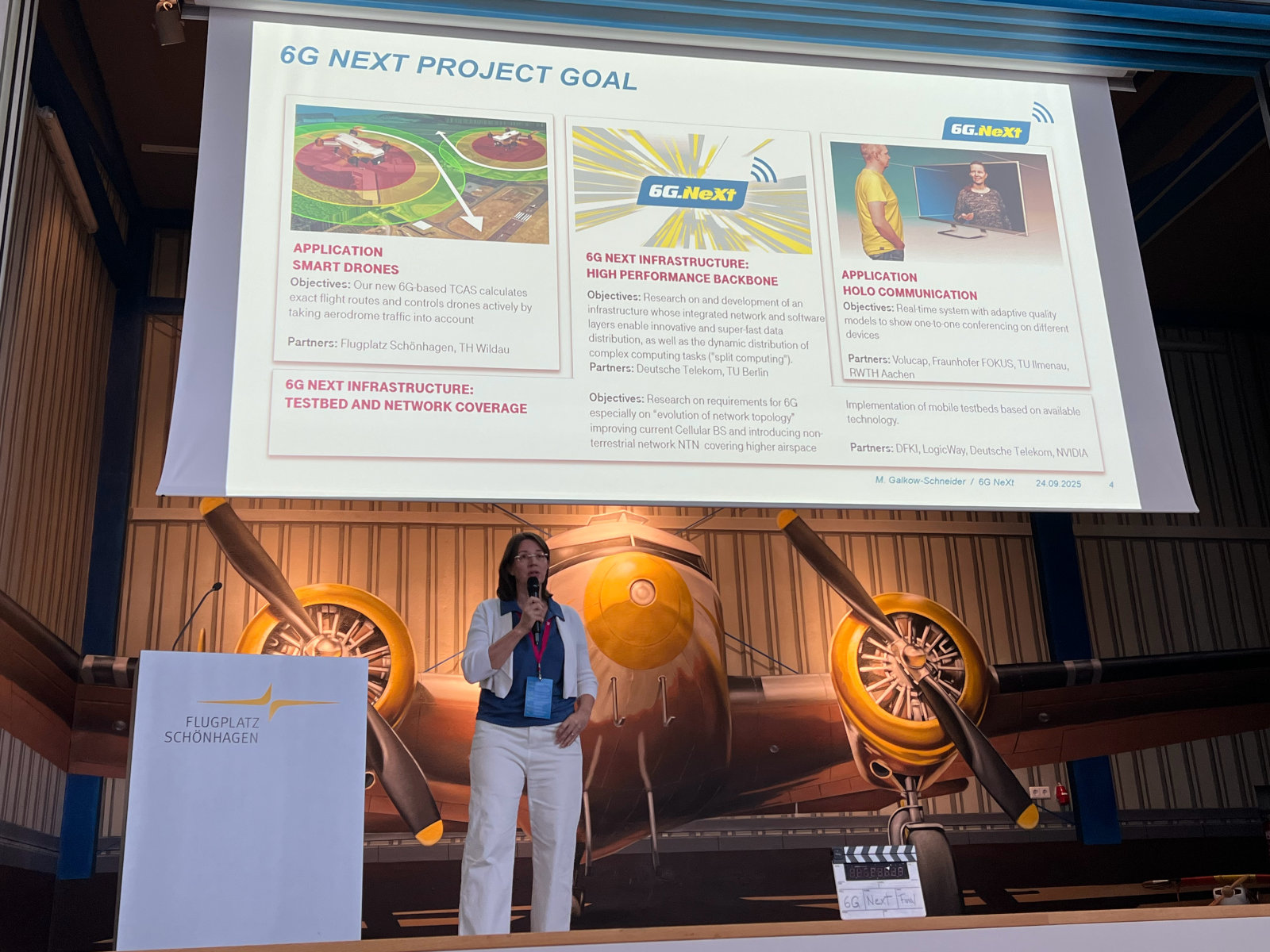6G NeXt Project Closing Event – Successful conclusion after 3 years of 6G research
The 6G NeXt research project draws a positive conclusion after three years of pioneering research and development work. The project, funded by the Federal Ministry of Research, Technology, and Space Travel, demonstrated sophisticated applications in an experimental 6G test environment at a closing event at Schönhagen airfield. Among other things, the project partners showcased an intelligent anti-collision system for drones in mixed air traffic.
The 6G NeXt research initiative was launched to explore next-generation architectural concepts for 6G networks. The focus was on a scalable, modular, and flexible infrastructure designed to support future requirements for extremely high speeds in process and data handling.
Participants from a wide range of sectors collaborated on the project, including industry, academic institutions, and public sector stakeholders. The project consortium led by Deutsche Telekom included DFKI, Fraunhofer FOKUS, Logic Way GmbH, TH Wildau, TU Berlin, TU Ilmenau, Volucap GmbH, and Flugplatzgesellschaft Schönhagen mbH. Associated partners such as IDRF – Interest Group of Regional Airfields e.V., NVIDIA, and RWTH Aachen contributed additional expertise. Thanks to this, the project benefited from a holistic research approach combining theoretical innovation with practical implementation.
At the closing event, the project presented several innovative feasibility studies for its future architecture test environment:
- High-Performance Broker: A modular, event-driven orchestrator that automates the provisioning of cloud and network resources across multiple providers. The broker is designed for dynamic 5G and 6G environments. It serves as an interface to a control AI and ensures that AI decisions are efficiently implemented in the cloud and network infrastructure.
- Volumetric Videoconferences: Real-time transmission of photorealistic, interactive 3D videos with realistic depth perception. This requires high upstream and downstream bandwidth and distributed or stepwise video processing. The study highlights the capabilities and possibilities immersive media will offer in future networks.
- Anti-Collision System for Aviation: An innovative safety system that enables drones to operate safely in mixed airspaces, such as around airports. This requires extremely low latency, synchronized data streams, and distributed (split) computing.
Thank you to everyone who joined us in Berlin where we’re turning theory into implementation!


